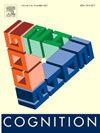跨越生命周期的识别能力:排队和基于反应时间的隐藏信息测试。
IF 2.8
1区 心理学
Q1 PSYCHOLOGY, EXPERIMENTAL
引用次数: 0
摘要
认知和社会因素会降低儿童和老年人的目击证人指认能力。一个能减轻这些因素影响的辨认程序可能对儿童和老年人证人有益。在一项现场实验中,我们对一个大型社区样本(N = 1239)在整个生命周期(6-79 岁)内的两种不同辨认程序的辨认表现进行了测绘,这两种程序分别是经典的列队辨认和基于反应时间的隐蔽信息测试(RT-CIT)。科学博物馆或科学展览会的参观者目睹了一场模拟盗窃案的录制过程,然后进行了传统排队或 RT-CIT 测试。年轻人(18-35 岁)的列队表现优于年轻人和老年人。在目标缺失条件下,RT-CIT 显示出中等的人脸识别诊断能力和缺失识别能力。年龄并不影响 RT-CIT 的识别能力。然而,儿童往往无法遵循 RT-CIT 的指示,导致大量排除。直接比较列队与 RT-CIT 的成绩表明,儿童和青少年在 RT-CIT 中的识别成绩优于列队。对于青壮年来说,两种程序之间没有差异。这一趋势在中年人身上发生了逆转,他们在列队与 RT-CIT 相比时表现出更好的识别能力。这些研究结果表明,RT-CIT 可以作为儿童和青少年的另一种识别程序,为无辜的嫌疑人提供保护。本文章由计算机程序翻译,如有差异,请以英文原文为准。
Identification performance across the life span: Lineups and the reaction time-based Concealed Information Test
Cognitive and social factors can deteriorate eyewitness identification performance in children and older adults. An identification procedure that mitigates the effect of such factors could be beneficial for child and older adult witnesses. In a field experiment, we mapped identification performance in a large community sample (N = 1239) across the lifespan (ages 6–79 years) for two different identification procedures: classic lineups and reaction time-based Concealed Information Test (RT-CIT). Visitors of a science museum or science fair witnessed a recorded mock theft and then took either a classic lineup, or the RT-CIT. Young adults (18–35-year-olds) outperformed younger and older age groups in lineup performance. The RT-CIT showed a moderate capacity to diagnose face recognition and absence of recognition in the target-absent condition. Age did not affect identification with the RT-CIT. However, children were often not able to follow the RT-CIT instructions, leading to a large number of exclusions. A direct comparison of lineup vs. RT-CIT performance showed that children and adolescents showed better identification performance in RT-CIT than lineups. For young adults, there was no difference between the two procedures. The trend turned around at mid-adult age who showed better identification performance when they were given a lineup compared to an RT-CIT. These findings suggest that the RT-CIT might be considered an alternative identification procedure for children and adolescents, offering protection for innocent suspects.
求助全文
通过发布文献求助,成功后即可免费获取论文全文。
去求助
来源期刊

Cognition
PSYCHOLOGY, EXPERIMENTAL-
CiteScore
6.40
自引率
5.90%
发文量
283
期刊介绍:
Cognition is an international journal that publishes theoretical and experimental papers on the study of the mind. It covers a wide variety of subjects concerning all the different aspects of cognition, ranging from biological and experimental studies to formal analysis. Contributions from the fields of psychology, neuroscience, linguistics, computer science, mathematics, ethology and philosophy are welcome in this journal provided that they have some bearing on the functioning of the mind. In addition, the journal serves as a forum for discussion of social and political aspects of cognitive science.
 求助内容:
求助内容: 应助结果提醒方式:
应助结果提醒方式:


